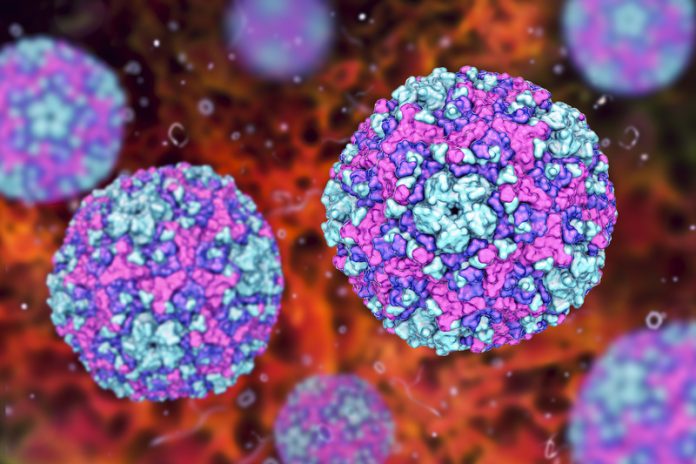Associate Professor Michela Alessandra Denti, Principal Investigator of the Laboratory of RNA Biology and Biotechnology at the Centre for Integrative Biology of the University of Trento, discusses how modulation of RNA splicing can represent a cure for inherited diseases
RNA impacts nearly every aspect of gene expression and it is now clear that a large portion of human genetic diseases is caused by mistakes in RNA metabolism. It has become progressively evident that RNA is not just a carrier of genetic information, but also a catalyst and a guide for sequence-specific recognition and processing of other RNA molecules.
The growing body of knowledge concerning RNAs is opening up exciting and unprecedented avenues for research: RNA molecules are today, at the same time, targets of therapeutic intervention and novel therapeutic molecules to treat human diseases.
RNA splicing
‘RNA splicing’ is a process that all messenger RNAs (mRNAs) undergo in the cell. Once transcription of a gene begins in the nucleus, the transcript undergoes a complex series of processes all devoted to the production of a mature mRNA, collectively dubbed ‘‘mRNA processing’’. One of these events, called RNA splicing, consists in the removal of intervening sequences (‘‘introns’’) and the joining of the coding portions of the transcript (‘‘exons’’).
RNA splicing is a major way by which the cell can induce transcriptional diversity, mainly through alternative splicing, and apply a fine control on this diversity. The proper recognition of introns and exons is mediated by cis-acting sequences on the pre-mRNA and trans-acting protein factors, constituting the splicing machinery.
Gene mutations can alter RNA splicing
Several gene mutations, which cause different rare inherited diseases, affect the splicing of specific mRNAs. Generally, mutations residing in introns are categorised as splicing mutations because the amino acid sequence of the protein is not altered, thus the problem most likely concerns proper splicing. However, splicing mutations can also be found in the exons, altering or not the coding sequence. In this case, their identification as a splicing mutation is much more difficult, as it requires analysis of the splicing pattern. Today it is believed that more than 50% of mutations act by altering the splicing pattern. Their effect can be retention of a part of an intron or the use of alternative splice sites, ultimately causing the insertion of a stop (“nonsense”) codon. This, in turn, would cause the messenger RNA to produce a truncated, hence not functional, protein. Correct identification of these mutations is of pivotal importance for the development of therapeutic approaches.
Modulating RNA splicing as a cure for inherited diseases
At variance with mainstream gene therapy approaches, which aim at replacing the mutated gene with a functional DNA copy of the gene itself, the therapeutic approach called “exon-skipping” aims at correcting the mRNA transcribed from the mutated gene. By introducing small RNA molecules, scientists mask the mRNA to the attack of the splicing machinery, inducing it to jump certain portions of the mRNA, thus restoring the correct message. Exon-skipping holds a great deal of promise as a potential cure for genetic diseases, and several clinical trials in Duchenne Muscular Dystrophy have supported the notion that the technique could one day become commonplace for many other inherited diseases.
Aside from splicing mutations, antisense-mediated splicing-correction approaches can potentially be utilised for the correction of missense and nonsense mutations, as well as for small insertions and deletions. In all cases where a mutation causes the introduction of a stop codon or frameshift leading to premature termination of the transcript, the possibility to interfere with the proper recognition, by the splicing machinery, of the exon carrying the mutation (therapeutic exon skipping) can be the right strategy to follow. The result of this approach is a shorter mature mRNA, missing the portion encoded by the skipped exon, but resulting in a restored protein. Such an approach has been proven successful to restore dystrophin in the muscles of Duchenne Muscular Dystrophy patients.
The most widely studied approach for the correction of aberrant splicing is the use of antisense oligonucleotides, short synthetic molecules that target the pre-mRNA and that can be delivered to the affected tissue by local injection or through intravenous injection and delivery via the circulation. As the effect of antisense oligonucleotides is time-limited, to have a durable effect repeated administration is required. In this view, scientists are also studying the possibility of using engineered small antisense RNA molecules, produced by endogenous transcription of DNA vectors provided to the affected organ using viral or non-viral delivery systems.
RNA splicing is an extremely complex and fundamental cellular process that has been so fare barely considered as a therapeutic target, even if it can be seen as a highly appealing one for its importance in the cell context. The ability to modulate splicing can in fact offer several advantages over other conventional gene replacement approaches.
By definition, antisense-based therapeutic approaches act following base-pairing with their mRNA target, thus giving the possibility of obtaining a great specificity of action. Since they act at the mRNA level, the endogenous transcriptional regulation of the target gene is always maintained. This means that the therapeutic effect is obtained only where and when the target pre-mRNA is present. Splicing-correction approaches also allow a fine-tuning over the relative abundance of splicing isoforms because, by acting at a pre-mRNA level, it is relatively easy to modulate their ratio. The availability of several different molecular tools that can be used to manipulate splicing renders these approaches a versatile and promising strategy for the multitude of genetic diseases known today.
To overcome the challenges of the exon-skipping strategy, at the end on 2012 several key stakeholders (scientists, clinicians, regulators, industry and patients) came together in COST (European Cooperation in the field of Scientific and Technical Research) Action BM1207 ( www.exonskipping.eu ). This COST Action aims to advance the development of antisense mediated exon skipping for rare diseases, using Duchenne muscular dystrophy, for which this approach is currently tested in phase 3 clinical trials, like a showcase. Through networking, participants belonging to 18 different countries, intend to allow the clinical implementation of antisense-mediated exon skipping for as many rare disease patients as possible.
Prof. Michela Alessandra Denti
Principal Investigator
Laboratory of RNA Biology and Biotechnology,
Centre for Integrative Biology, University of Trento, Italy
michela.denti@unitn.it
http://www.unitn.it/en/cibio/11886/laboratory-rna-biology-and-biotechnology












